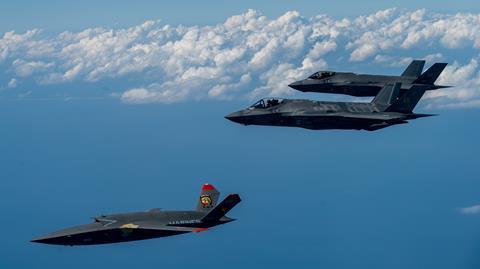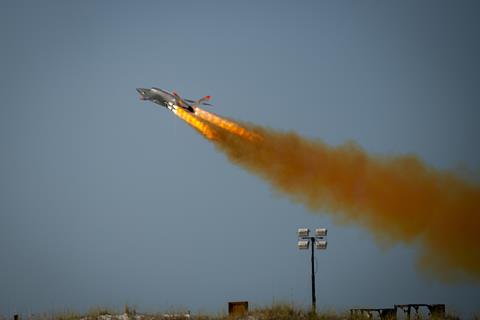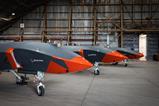The US Marine Corps (USMC) has completed its third test flight of the Kratos XQ-58 Valkyrie autonomous jet aircraft.
Held on 20 September at Eglin AFB in Florida, the sortie saw the successful integration of the Link 16 data-communications system that will be critical to the effective deployment of future uncrewed fighters.
“The test demonstrated newly added Link 16 capabilities for the uncrewed collaborative combat aircraft prototype, marking the first time the Department of Defense controlled an air vehicle using off-board expeditionary methods,” the USMC said on 26 September.

Link 16 itself is not new; the USA and other NATO members use the system to facilitate secure communications between aircraft, naval ships and ground-based systems.
Collaborative combat aircraft is an umbrella term used by the Pentagon to describe the autonomous jets currently under development, primarily by the US Air Force.
Kratos was an early leader in the space, with its subsonic XQ-58 completing its first flight in 2019. Although the air force purchased several Valkyries for testing, the service ultimately selected proposals from General Atomics Aeronautical Systems and Anduril Industries as finalists to develop uncrewed aircraft under the Collaborative Combat Aircraft (CCA) programme.
Senior air force officials say those prototypes will make first flights in the coming year.
“At least one of them will be in our inventory in meaningful numbers in the next few years,” air force secretary Frank Kendall said on 16 September at the 2024 Air & Spaces Forces Association (AFA) conference near Washington, DC.

Meanwhile, the USMC is continuing test work on the XQ-58, including integration of the Link 16 tactical data system that is expected to enable communication with, and control of, CCAs. For example, Link 16 could allow Lockheed Martin F-35 pilots to receive sensor data from CCAs and task those aircraft with missions, such as engaging targets.
“Initial results indicate that the prototype met threshold requirements for autonomously exchanging relevant tactical information,” the USMC says of the latest XQ-58 test flight.
Based on that performance, the service says it will fly the Valkyrie again in October during exercises named Emerald Flag 2024. The pilotless jet will be used to demonstrate “cooperative kill chain closure”, pairing manned and unmanned lethal strike platforms.
“The XQ-58A has proven itself ready”, the USMC says, noting Emerald Flag will mark the first time such autonomous systems have been so utilised in large-scale exercises.
The USMC has previously said it plans for six XQ-58 test flights, the first of which was completed in 2023.































